not a certificate expert but have gone through different resources on the internet but couldn't get this to work, so posting here.
I have a cert that I would like to include in /etc/pki/ca-trust/extracted/pem/tls-ca-bundle.pem
Let's say this cert is xx_exp_2023_11_30.cer.
So, I have copied it to /etc/pki/ca-trust/source/anchors/ and then run
update-ca-trust force-enable
update-ca-trust extract
and none of them throw me an error.
as per this link, I have also done this check
openssl x509 -noout -text -in xx_exp_2023_11_30.cer | grep --after-context=2 "X509v3 Basic Constraints" | grep "CA:TRUE"
but yet I do not see the contents being included in
/etc/pki/ca-trust/extracted/pem/tls-ca-bundle.pem
i.e. cat tls-ca-bundle.pem | grep <first few characs of the certfile> yields nothing. The same grep command yields results for other cert files copied over to
/etc/pki/ca-trust/source/anchors/
I also went through this link, to understand if my cert is the in the right folder (source vs anchor), and since it is in .cer format it seems it should be anchor folder.
What am I missing or doing wrong?
Update 1:
I can see that cert I am trying to add lands up in /etc/pki/ca-trust/extracted/openssl/ca-bundle.trust.crt but not in /etc/pki/ca-trust/extracted/pem/tls-ca-bundle.pem. This is also highlighted in the answer from Jeight here. But I do not know why not in the other location and my application (which is trying to connect) fails because of cert chain errors, so probably that is looking at /etc/pki/ca-trust/extracted/pem/tls-ca-bundle.pem. Why does it end up in one and not in the other? And also, what is the difference between these?
Update 2:
I read that the ones which end up in the openssl subfolder are the ones which are BEGIN TRUSTED CERTIFICATE
But mine is of the format BEGIN CERTIFICATE. So, not sure why is it landing up in the openssl subfolder and not in the pem subfolder.
UPDATE 3 As asked in the comment, below is the output of
openssl x509 -noout -text -in xx_exp_2023_11_30.cer
I have anonymized some contents with xx (or something or bla bla)
Certificate:
Data:
Version: 3 (0x2)
Serial Number:
ser num
Signature Algorithm: encrytpion
Issuer: O = XX, CN = TST-XX
Validity
Not Before: Nov 30 05:46:42 2021 GMT
Not After : Nov 30 05:46:42 2023 GMT
Subject: CN = xx.tst2.dom
Subject Public Key Info:
Public Key Algorithm: rsaEncryption
RSA Public-Key: (2048 bit)
Modulus:
something
Exponent: 65537 (0x10001)
X509v3 extensions:
X509v3 Key Usage:
Digital Signature, Key Encipherment
something:
0-.%+blabla
X509v3 Subject Key Identifier:
Something
X509v3 Authority Key Identifier:
keyid:Something
X509v3 CRL Distribution Points:
Full Name:
URI:http://address.crl
Authority Information Access:
CA Issuers - URI:http://address.crt
X509v3 Extended Key Usage:
TLS Web Server Authentication
xxxxx:
0.0
..+.......
X509v3 Subject Alternative Name:
DNS:dnslist
Signature Algorithm: sha256WithRSAEncryption
......
